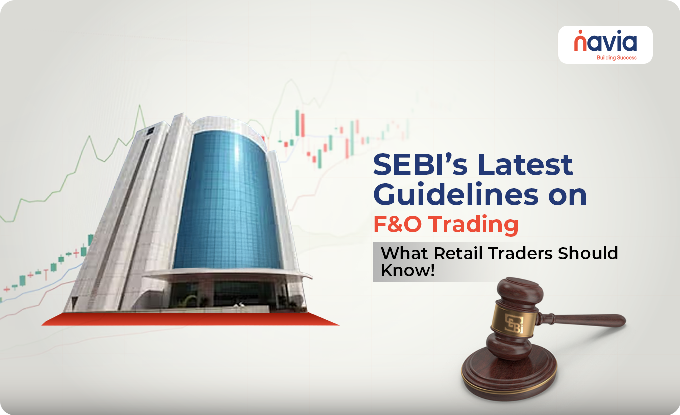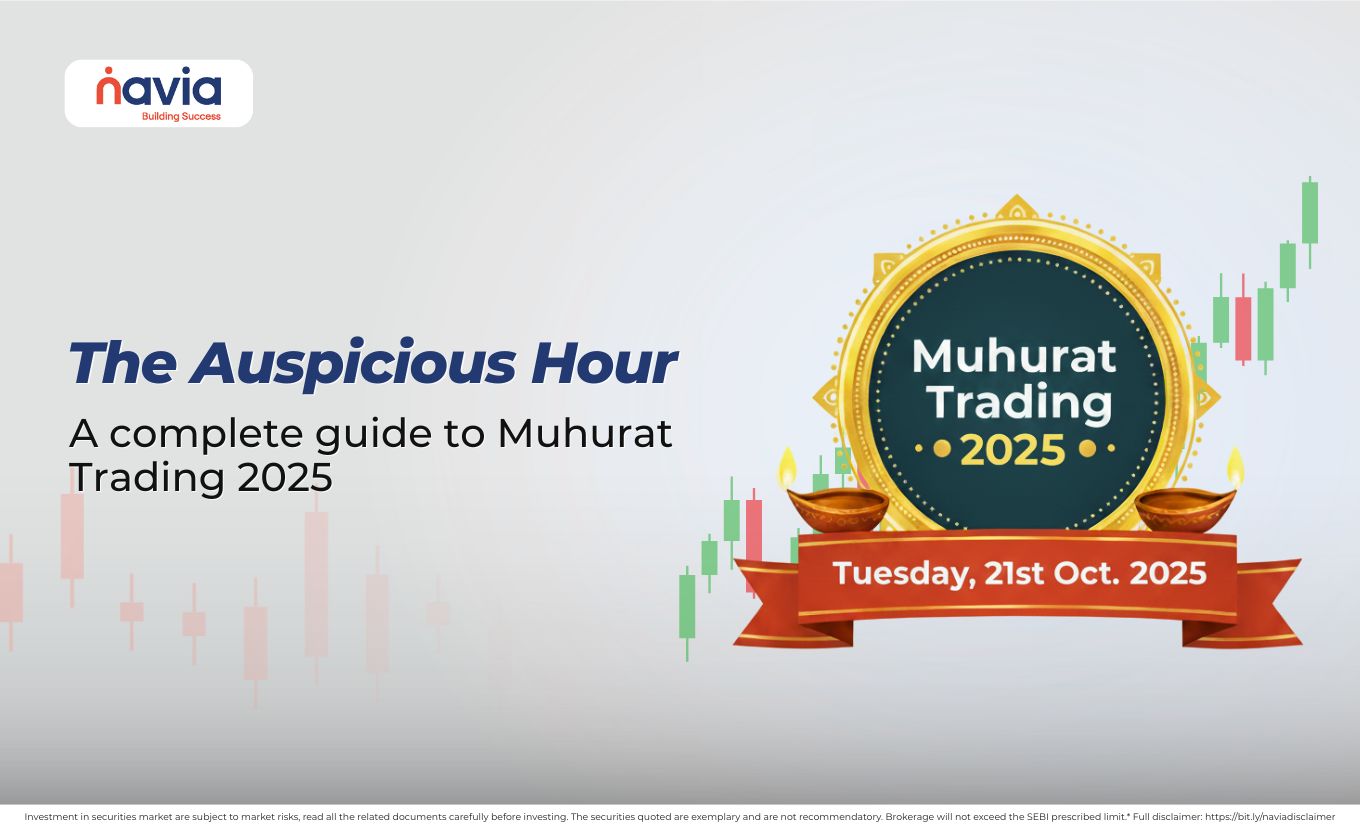SEBI’s Latest Guidelines on F&O Trading – What Retail Traders Should Know!

The Securities and Exchange Board of India (SEBI) has implemented new set of regulations for the Futures & Options (F&O) segments. These are aimed at protecting retail traders and ensuring market stability. It will cover everything from position limits and lot sizes to risk monitoring and margin norms. Through this blog we will break down these new SEBI rules for F&O and explain how they impact retail traders in detail.
1. Future Equivalent Open Interest
According to SEBI’s circular, open interest (OI) will now be measured using Future Equivalent (FutEq) OI or delta-based OI instead of the older notional OI method. Earlier, notional OI just added up all futures and options contracts, without looking at the actual risk involved.
Delta-based OI gives a more accurate picture of real market exposure. And FutEq OI calculates total open positions by considering the delta of each trade rather than counting contracts. It helps avoid situations where a stock is unfairly placed under the F&O ban due to inflated notional OI.
2. MWPL Now Tied to Free Float and Trading Volumes
Market-Wide Position Limit (MWPL) to Be Based on Free Float and Trading Volume. SEBI updated how the Market-Wide Position Limit (MWPL) — the maximum number of contracts allowed for trading in a stock — is calculated. Now, MWPL will be the lower of two things:
🠖 15% of the stock’s free float, or
🠖 65 times the average daily cash market volume across all exchanges
This change means the limit will now depend more on how much of the stock is available to trade and how actively it’s traded in the cash market. According to SEBI, linking MWPL to real trading activity will reduce chances of price manipulation and better match the risk in derivatives to the actual liquidity in the cash market. This new rule will take effect from October 1, 2025.
3. Rules for Taking Positions in Single Stocks Under Ban Period
Even if a stock is under ban, SEBI will allow trade, but only if they help reduce the trader’s overall risk.
For example, if your net position (delta) is +10 or -10 at the end of Day 1, it should be brought closer to zero by the end of Day 2. Simply changing the position from positive to negative (or vice versa) won’t count as reducing risk. Also, if your exposure increases passively due to price movement (not because of new trades), it won’t be considered a violation. These new rules will apply from October 1, 2025.
4. Real-Time Monitoring of MWPL Usage for Individual Stocks
SEBI has said that clearing corporations will check open positions (FutEq OI) at least four random times during the trading day. If traders go beyond the allowed limits, exchanges can take steps like adding extra margin requirements or running stricter surveillance. Any breaches must be reported to SEBI every two weeks.
Also, exchanges will show live updates of how much of the trading limit is being used. A standard procedure for this process will be created by exchanges along with SEBI, and it will start on November 3, 2025.
5. Increased Trading Limits for Index Futures and Options
SEBI’s new circular says that from July 1, 2025, onwards there will be new position limits for index-based options and futures trading.
For Index Options:
🠖 Net limit: ₹1,500 crore (at the end of the day)
🠖 Gross limit: ₹10,000 crore (total of either long or short positions)
These limits apply per PAN, and SEBI will gradually implement this between July 1 and December 5, 2025.
For Index Futures:
The limits will differ depending on the type of participant:
FPI Category I:
Mutual Funds, Brokers (proprietary or client trades) can hold the higher of 15% of market-wide open interest or ₹500 crore.
FPI Category II:
Like corporates, family offices, etc., can hold the 10% market-wide OI or ₹500 crore. These are in addition to your regular cash or stock holdings, and these futures limits will be measured on a gross notional basis.
In short, traders will have more room to trade index futures and options — but under tighter supervision to maintain market discipline.
6. New Rules for Derivatives on Non-Benchmark Indices
The new rules allow F&O trading on non-benchmark indices. These indices must now have at least 14 stocks in them. Also, the largest stock in the index can’t have more than 20% weight, and the top three stocks together can’t make up more than 45% of the index. These rules will come into effect on November 3, 2025.
7. Position Limits for Individual Traders in Single Stocks
Starting October 1, 2025, individual traders can hold up to 10% of the total allowed limit (MWPL) in a single stock. Proprietary brokers can go up to 20%, while the combined limit for foreign investors (FPIs) and all brokers is capped at 30%.
8. Pre-Open Session in F&O Trading
Just like in the cash market, F&O (Futures & Options) will now have a pre-open session too. This session will apply to current-month futures contracts on individual stocks and indices, following the same rules as the cash market’s pre-open and post-close sessions.
In the last five trading days before expiry, the pre-open session will also include next-month futures contracts, since most trading shifts to the new expiry during that time. This rule will come into effect on December 6, 2025.

9. MFs and AIFs to Report Options Exposure Using FutEq Method
SEBI has recommended that Mutual Funds and Alternative Investment Funds (AIFs) should calculate both their long and short options positions using the Futures Equivalent (FutEq) method. SEBI will release a separate circular with more details soon.
Why Do These Rules Matter for Retail Traders?
🔸 Over nine out of ten retail F&O traders lose money due to excessive leverage and speculative trading. Raising lot sizes and limiting contracts make it harder for casual traders to overextend, reducing exposure to severe losses.
🔸 By enforcing intraday limits and delta-based monitoring, SEBI ensures that traders cannot exceed risk thresholds undetected, so this protects them from unexpected margin calls.
🔸 Tying open interest limits to actual market data (cash volumes/free float) and switching to FutEq OI offers clearer insight.
🔸 Consolidating weekly expiries and raising upfront margins aim to reduce volatility around expiry days.
Conclusion
SEBI’s F&O reforms aim to create a safer, stable and more transparent derivatives market in India. And also, they introduce additional aspects like bigger investment per contract and higher margin calls. These will limit excessive speculation and protect retail traders. So, to become an informed investor, you have to adapt to these guidelines, which will give you an opportunity to trade wisely by promising derivatives space.
Traders and investors should check with their broker/platform to ensure compliance. Keep an eye out for the upcoming circular and update your strategies accordingly with Navia.
Do You Find This Interesting?
Frequently Asked Questions
Why did SEBI change F&O rules?
Retail trading blew up, but 90% of retail F&O traders lost money, prompting tougher rules to curb excess and protect investors.
How will the rule changes impact on me as a retail trader?
You’ll need more capital due to larger lot sizes and margins. Smaller, high-frequency trades have become costlier, reducing speculative opportunities.
How will the new MWPL calculation affect traders?
Stocks with low free float or thinly traded volumes may see reduced MWPL, potentially limiting speculative positions in F&O.
What is the FutEq open interest method?
It’s a delta-adjusted measure reflecting true price sensitivity of positions, replacing old notional OI to better assess systemic risk.
How can I ensure compliance?
Stay updated through broker alerts, track position size intraday, ensure upfront payments, and attend SEBI educational sessions for retail traders.
DISCLAIMER: Investments in securities market are subject to market risks, read all the related documents carefully before investing. The securities quoted are exemplary and are not recommendatory. Full disclaimer: https://bit.ly/naviadisclaimer.






